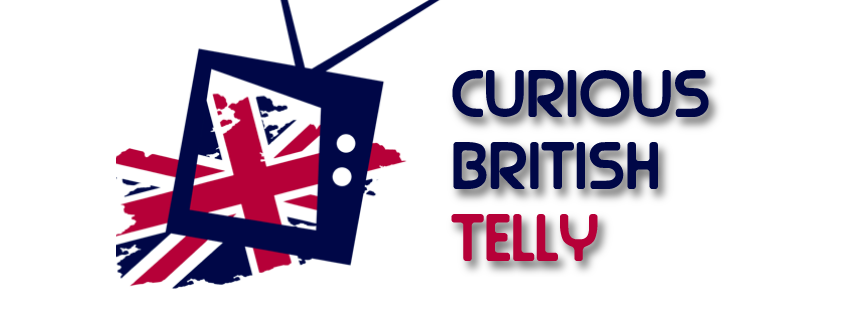One of my favourite television programmes as a pre-schooler was ITV's lunchtime children's programme Let's Pretend. With a firm footing in the world of imagination, Let's Pretend demonstrated how the mind could be unshackled to create anything. And in the 1980s, with no YouTube to rot the brain in a smorgasbord of toddler-based memes and toy promotions reviews, children had to rely on making their own entertainment. The show was a big hit with myself, but despite running for seven years between 1982 - 89, few people reference it in the wider discussion on children's television.
Naturally, I jumped at the chance to write about it for one of my books - that specific section is reproduced here - and covered the outline of the series fairly comprehensively. So, there's not really any need for me to regurgitate that information again. However, when I wrote my book, footage of the series was curiously hard to source, despite just over 200 episodes being produced. I managed to track down a few at some television archives, but that was it. Thankfully, since then, a few have made their way on to YouTube. And this has provided me with an ideal opportunity to not only write a few, short articles reviewing them, but to also carve my Let's Pretend outpost of fandom a little more indelibly into the information superhighway's surface. So, on with the first one...
The Singer Who Lost his Voice - written by Denis Bond - aired on the 18th August 1986 and, as with all episodes of Let's Pretend, features three pretenders. This particular edition features the clean cut, popstar looks of Patrick Pearson, master of the piano Neal Swettenham and "for a moment there I thought it was Christopher Villiers but actually it's" Michael Bray. All three made multiple appearances on Let's Pretend and continued appearing in televisual roles over the following decade and a bit. And, like virtually all the pretenders that popped up in Let's Pretend, they're fine actors capable of delivering confident performances and exuding a warmth pitched perfectly for children's television.
So, yes, good actors. But what about the actual episode? Starting midway through a conversation about the wonders of cheese and tomato sandwiches ("put a bit of salt on" suggests a salivating Bray), the episode begins with all three pretenders sat around a table. I'm not sure if it's ever established where this table is, but we'll call it the Let's Pretend house for simplicity. Anyway, all of a sudden, a piece of black paper descends from the heavens and onto the table. Keen to get the creative juices flowing, the pretenders start improvising with the paper by fashioning it into a witch's hat and a telescope before deciding it's best used as a megaphone.
With the megaphone 'prop' established it's time to hop across to the piano where we're treated to a rendition of What Can a Singer Do? Swettenham tinkles the ivories with a jazzy aplomb whilst Pearson and Bray accompany him with lyrics such as "If a cow lost his voice and couldn't go moo *MOO* and if a cockerel couldn't cock-a-doodle-doo, what would he do?" and "The worst thing to go wrong is a singer who can't sing a song when he's lost his voice and doesn't know what to do". It all sounds much better when performed. Believe me. Anyway, as Swettenham announces, it's now time to watch this week's play. And, as Pearson and Bray quickly scarper away to get ready, the red curtains (complete with emblems of the Let's Pretend caterpillar) are raised and it's time for The Singer Who Lost His Voice.
The play opens, as per usual, with an illustrated character transitioning into a fully functioning actual human being homosapien real person. And, this week, the honour falls to Pearson who is wearing a dinner suit in his role of the singer. He's busy practicing his scales assiduously for, this evening, he has a very important show. But, unfortunately, he practices too hard and his voice soon becomes as croaky as the oldest frog in the pond. Rather fortuitously, a doctor (played by Bray) turns up at this point and prescribes him a period of rest and silence. The singer decides to head to the countryside where he hopes his voice will get better. Along the way, however, he'll encounter cabbage sellers, cockerels and farmers who all have some helpful advice for him.
It's a classic Let's Pretend production with a minimum of props and a rather generous helping of whimsy. It's certainly a low-budget affair - check out the green sheets draped over chairs to depict a hillside with cardboard cutout sheep stuck on top - but the imagination of a preschooler, in the mid-80s, needed little else. The premise of a singer wandering through the countryside and being educated on the brilliance of a firm cabbage may sound peculiar, but it's infused with a such a pleasing simplicity and joie de vivre that it's irresistibly charming. Another winning edition of Let's Pretend then (although the Pipkin's fanbase will forever hate it for replacing Hartley Hare in the schedules) and hopefully it won't be the last one featured on here.
If you do, of course, have any old episodes of Let's Pretend stashed away on VHS tapes then please get in touch via curiousbritishtelly@gmail.com. There are still precious few episodes online and it would be great to get some more digitised and uploaded. Also, the majority of the first series is missing from the archives, so it would be even more amazing to find some of those!


Thankyou for posting this. The program was aired at a time when there was general consensus in the educational community that children learn THROUGH play, in particular 'socio-dramatic play'.... Once the National Curriculum kicked in after 1988, it was all about targets and tick boxes. Ah well. A lovely piece of nostalgia nevertheless.
ReplyDelete